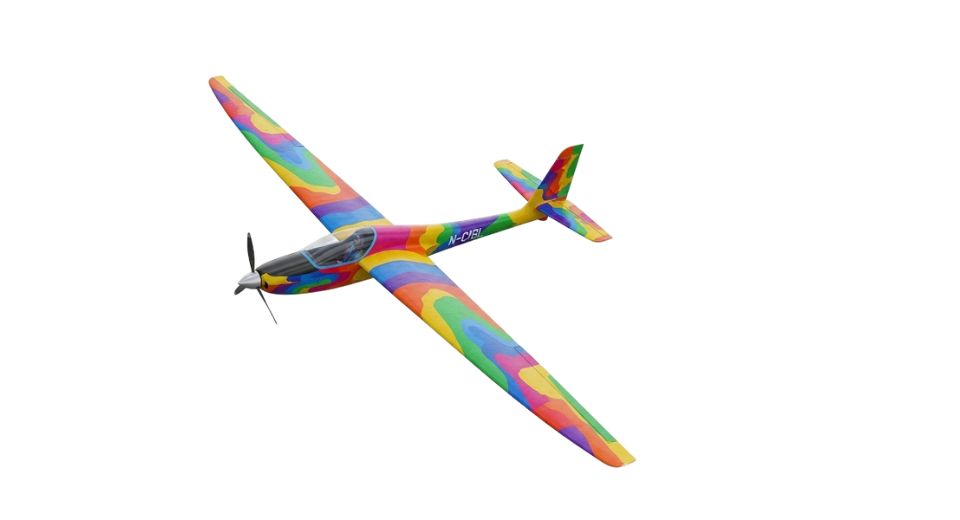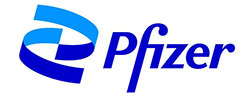MARKET OVERVIEW
The global motor gliders market in the aviation sector will continue to define a unique segment that specializes in aircraft that have both gliding and powered flight. This market will cut across geographic locations and user classes, providing solutions that combine aerodynamic effectiveness with governed propulsion. Motor gliders will be distinct from sailplanes in having engines to enable them to take off on their own or increase flight time without depending entirely on thermals. The capacity for mode-shifting between powered and non-powered flight will characterize their value in recreational, training, and specialized uses. Market frontiers will range from civilian flying clubs to government-sponsored aeronautical schools.
Specifically, private pilots and flight schools looking for affordable substitutes for powered aircraft will appreciate motor gliders for their lower operating costs and increased airborne versatility. This unique type of aircraft will find its niche in surveillance, atmospheric science, and pilot training with a special compromise between control and efficiency. In most geographies, these gliders will fall under a particular regulatory framework that is different from either ultralights or traditional airplanes, which will have an impact on manufacturing and operational demands. The global motor gliders market will also continue to draw interest among manufacturers looking to try out lightweight materials and economical propulsion technologies. These planes will be a testing ground for aerodynamic innovation, with designers pushing to enhance wing shapes, minimize drag, and incorporate hybrid power solutions.
Due to their technical sophistication and specialized application, the motor glider market will not mirror general trends in general aviation. Rather, it will chart a customized course driven by niche requirements, institutional tastes, and changing recreational interests. As market players react to varied consumer demands, product offerings will vary from straightforward single-seat models to sophisticated two-seaters for extended flight ranges. Variations in regional airspace regulations, certification procedures, and pilots' licensing structures will all influence the way the global motor gliders market will develop across regions. In addition, the role of national aviation organizations and international standardization organizations will be key to defining design expectations, safety requirements, and acceptable use cases.
Owners and operators of aircraft who desire performance with operating versatility will view motor gliders as not just sporting or recreational vehicles, but also as test beds for technology development. Engine configurations, fuel economy, and emissions profiles will all continue to be vital considerations for manufacturers and purchasers alike. While powertrain technology continues to leave its imprint on the world of aviation, the global motor gliders market will be a space where functionality and sustainability converge. The next few years will see the global motor gliders market prove that specialized aircraft are capable of remaining relevant while evolving to accommodate contemporary constraints. With its synthesis of powered capability and historic gliding flight, the segment will present a singular combination of performance and efficiency. Its market horizon will continue to be shaped by technological development and the particular requirements of its user sector, retaining its separate identity within the larger aviation market.
Global motor gliders market is estimated to reach $5,453.82 Million by 2032; growing at a CAGR of 6.2% from 2025 to 2032.

GROWTH FACTORS
The global motor gliders market is anticipated to observe significant changes based on a combination of technological advancement and shifting aviation tastes. As growing numbers of people are interested in recreational flying and sport aviation, motor gliders are coming under the spotlight for their own special blend of powered flight and quiet soaring. These vehicles are perfect for those who want the independence of flight without the headache and noise usually encountered with regular planes. They are enjoyed by hobbyists and aviation buffs alike, but as a form of transportation as much as an enjoyable personal experience.
One of the primary drivers of this market is the development in materials and engine systems. Their weight has decreased with the use of light materials without sacrificing their safety or strength. The change makes motor gliders efficient and maneuverable. Besides, advancements in electric propulsion are also making motor gliders environmentally friendly. They do not produce as much noise as conventional engines, have fewer emissions, and are low in maintenance. This makes them suitable for private use as well as pilot training.
Nevertheless, there could be some challenges that can dampen the growth rate. The price of purchasing a motor glider is quite high, deterring entry. Additionally, the number of certified training schools is still low. This proves to be a barrier to individuals who are interested in learning to fly motor gliders legally and safely. Another area of concern is the complication of laws in various nations. It is complicated to navigate air space regulations and obtain the right permits, and even new pilots find this too much. These regulations differ and sometimes restrict flying areas for motor gliders, making them less useful.
Despite these impediments, the future for the global motor gliders market remains optimistic. There is an increasing demand for environmentally friendly forms of transport, and motor gliders, particularly electric ones, are well-suited to that future. As news propagates and technology advances further, the prospect of more affordable, accessible, and cleaner motor gliders will increase. This may appeal to a broader community of users, from amateur pilots to individuals seeking alternatives to conventional private aircraft. In the years to come, the industry will most probably be enriched by innovations and a new perspective regarding personal flying, creating new opportunities for progress and expansion.
MARKET SEGMENTATION
By Type
The global motor gliders market shall continue to grow steadily in the coming few years as interest in fuel efficiency, environmental friendliness, and leisure aviation is consistently on the increase. Motor gliders, which are planes capable of using both engine power and natural air flows, provide a distinctive flying experience. They integrate the characteristics of powered aircraft with conventional gliders, allowing the flexibility of transitioning between powered flight and quiet soaring. This flexibility is what is making them more desirable, not just to enthusiasts but also to flight schools and training institutions.
In the future, this sector is likely to experience further demand as technology progresses and motor gliders become more efficient and less maintenance-intensive. As the awareness of needing to cut emissions grows, planes that have lower fuel consumption or are powered by electricity will be increasingly vital. Already, manufacturers are developing longer-lasting batteries, lighter materials, and wings and fuselages that can achieve more sustained flight time without the engine. These advances will bring motor gliders closer to new owners and more suitable for longer flights.
The global motor gliders market is also influenced by its various types. Self-launching motor gliders are designed with strong motors that enable them to launch without the help of anything else. They are convenient since they eliminate the requirement for tow planes or winches, making them suitable for single pilots who desire more autonomy. Sustainer motor gliders, however, cannot fly on their own but have engines that enable them to remain aloft longer after they're already gliding. These are good for pilots who mainly want a glider but who also desire the provision of extended range. Touring motor gliders are intended for comfortable cross-country flying, with features such as bigger cockpits and improved visibility. They are designed for more extended journeys and tend to be preferred by those who like to discover from the air at a slower, more intimate rate.
These models will evolve further in the future. We can anticipate self-launching aircraft with less noisy engines or entire electric powerplants. Touring models can be equipped with advanced navigation tools and softer interiors. As more individuals worldwide are looking for cleaner and quieter modes of flight, the global motor gliders market will discover new applications and customers, spurring innovation and growth.
By Application
The global motor gliders market is beginning to exhibit steady growth, fueled by an interest in various forms of aviation activity. As more individuals seek out alternative means of experiencing flight, motor gliders are increasingly becoming desirable. These aircraft take the qualities of conventional gliders and add the advantage of having an engine, which presents flexibility as well as control. Since flying is becoming more and more accessible, particularly for recreational use and training, there will be a growing need for motor gliders. That they run quietly and are fuel-efficient also makes them more attractive, particularly as the environmental requirements of the aviation industry continue to influence it.
Considering the applications, motor glider use in leisure flying is set to increase dramatically. People are increasingly resorting to flying as a hobby for personal reasons, and air travel is the only mode of transport that affords this sense of freedom. Motor gliders offer a smooth and pleasant flying experience, and thus are more suited for recreational flyers. This market segment is likely to gain from enhanced publicity, better infrastructure, and increased focus on outdoor activity.
Another vital field is flight training. Motor gliders are frequently employed in initial pilot training because they are less demanding to maneuver and less expensive to operate. With growing global interest in careers in aviation, increasing numbers of flight training schools are adding these aircraft to their curricula. Because they can be flown with or without the use of power, motor gliders also assist novice pilots in learning fundamental flying skills. This applied method of pilot training reinforces long-term aviation workforce health and enhances demand for this market segment.
The military industry also has a place, albeit on a more specialized scale. A few defense agencies utilize motor gliders for surveillance, training, or simple transport missions. Their silence is useful for missions that need little noise or low visibility. While this use may not be as widespread as others, it provides a specialized asset to the overall marketplace by allowing specialized applications.
Lastly, there are other applications that do not specifically fit into recreational, training, or military purposes. These could be research, monitoring for the environment, or personal transportation to rural locations. As the globe seeks cleaner and more flexible modes of travel, motor gliders can find new and innovative uses. With the increased technology and evolving transport requirements, the global motor gliders market will continue to adapt and discover new niches in multiple fields.
By End-User
The global motor gliders market will experience gradual but consistent transformation as improvements in aeronautics technology continue to influence the way we perceive and utilize lightweight aircraft. Motor gliders that have characteristics of both powered and sailplanes are attracting various user groups for their efficiency, quiet operation, and flexibility. Such aircraft provide a unique combination of fuel-powered thrust and gliding ability, rendering them effective in most situations.
In the future, there is increased interest by private users who regard motor gliders as a viable mode of personal transportation or recreational use. These machines will appeal to more hobbyists and enthusiasts looking for a low-maintenance experience of flying in comparison to conventional airplanes. With advancing technology, manufacturers will find it easier to develop safer and more fuel-efficient models, a factor that will improve the appeal of motor gliders to this market. The capacity to take off without support and the liberty to glide in non-powered flight will remain dominant characteristics driving private sector interest.
Commercial use, however, is projected to develop less rapidly but not be ignored. Certain businesses might investigate utilizing motor gliders for training flights or short-range travel in regions where noise legislation restricts the operation of noisier aircraft. In doing so, the global motor gliders market can potentially provide certain cost-saving advantages. If hybrid or battery-powered engines become more prevalent, commercial usage could extend even further, particularly in sectors that place a premium on sustainability and quieter air travel.
Military consumers are a specialized segment of this market. Although motor gliders are not primary combatants or heavy-load vehicles, they can be used in specialty applications like surveillance, training, or unobtrusive transportation in sensitive areas. Due to their virtually silent glide and longer duration in the air without drawing much fuel, they will remain viable for missions involving a low profile. As governments seek to diversify their flight fleets with more efficient-energy technologies, motor gliders could provide part of the solution for non-combat services.
In all three sectors private, commercial, and military the future of the global motor gliders market will be determined by technology, consumer requirements, and evolving perceptions on green aviation. Although this market remains a niche industry within the broader aircraft business, its contribution could become more apparent as flying requirements and priorities change.
|
Forecast Period |
2025-2032 |
|
Market Size in 2025 |
$3,597.81 million |
|
Market Size by 2032 |
$5,453.82 Million |
|
Growth Rate from 2025 to 2032 |
6.2% |
|
Base Year |
2024 |
|
Regions Covered |
North America, Europe, Asia-Pacific Green, South America, Middle East & Africa |
REGIONAL ANALYSIS
The global motor gliders market is slowly progressing towards an adaptive and advanced phase as emerging technologies and local trends define its future. This market consisting of aircraft suitable for powered as well as unpowered flight is witnessing a consistent transformation as manufacturers and flyers seek fuel-efficient, environment-friendly alternatives. These motor gliders are attracting interest due to their capacity to operate on less fuel and emit less while maintaining performance. Awareness of the environmental footprint is going to spur most industries, including aviation, to take these planes more seriously in the future.
Geographically, the global motor gliders market is organized into a number of significant regions, each of which affects the market in its own capacity. North America is a significant contributor, particularly the United States, Canada, and Mexico, where developments in recreational aviation and aerospace technology continue to lead the way toward future demand. Europe, including the UK, Germany, France, and Italy, is more concerned with enhancing flight training programs and developing more eco-friendly aircraft, which will enhance the demand for motor gliders in civil and private sectors. In Asia-Pacific, nations such as India, China, Japan, and South Korea are also indicating rising interest due to expanding pilot training schools and recreational flying. These areas will be experiencing steady growth as local governments and private investors pour more funds into aviation infrastructure.
South America, being dominated by Brazil and Argentina, indicates promising expansion because of its good flying conditions and the growth of aviation tourism. These markets may not be as mature as some others at present, but they should see increasing activity as recreational flying gains popularity. In the meantime, the Middle East and Africa, such as the GCC Countries, Egypt, and South Africa, will also figure as governments seek alternative flight training solutions and environmentally friendly aircraft solutions. Their vast open spaces allow them to be appropriate for glider operations, and they will likely invest more in developing aviation in the future.
In the future, the global motor gliders market will probably be helped by advances in electric propulsion, battery technology, and light materials. These changes will make motor gliders more affordable, more fuel-efficient, and more convenient for new and seasoned pilots alike. As people become more aware and areas conform to environmental regulations, this market should pick up pace quietly in both well-established and emerging areas of the globe.

COMPETITIVE PLAYERS
The global motor gliders market is likely to grow at a consistent rate as there is more interest in energy-efficient flights and sustainable flight. As nations start to prioritize the reduction of emissions and assistance for greener technology, motor glider use is attracting attention. These planes, which have the dual functionality of gliding and utilizing an engine when necessary, are now gaining popularity among flying clubs, training schools, and even in research contexts. With the added advantages of saving fuel and lowering noise levels, motor gliders are gradually establishing a firm place in the broader aviation sector.
In the years to come, this market is set to gain from improved technology in the form of lighter composite materials and improved electric propulsion systems. As battery life continues to advance, range and performance of electric motor gliders will increase, becoming more viable for longer journeys. Such developments will create possibilities for new uses, ranging from surveillance and environmental monitoring to even personal transportation. Although existing use is primarily for recreational and sporting aviation, increased environmental concerns could encourage governments to fund motor gliders as a training substitute for conventional aircraft.
A number of companies are already in the process of entering this market. Key companies are Aeros Company, Solid Design Inc. (Altus), elfin.aero GmbH, Europa Aircraft, Sonex, LLC, Pipistrel d.o.o., Ams-flight.si, Alexander Schleicher GmbH, Schempp-Hirth Flugzeug-Vertriebs GmbH, DG Aviation GmbH, Distar Air USA, LLC, Binder Flugmotorenund Flugzeugbau GmbH, Diamond Aircraft Industries, Jonker Sailplanes Pty Ltd., Lange Aviation GmbH, and Phoenix Air USA. These firms deal with various things, ranging from manufacturing lightweight and efficient airframes to developing sophisticated propulsion systems. Their collective handiwork will also tend to determine the manner in which the market evolves and responds to the challenges and needs of the future.
In addition, there is an emerging trend towards personal aviation, where individuals search for quiet, efficient, and environmentally compatible means of flight. Motor gliders complement well this new way of thinking. As urban sprawl takes hold and individuals pursue alternative means of transportation, low-cost, small aircraft will become increasingly desirable. This consistent change in interest and investment will keep propelling the global motor gliders market forward. With favorable policies, enhanced technology, and increased popular acceptance, the future of this market is bright. What today is a niche space could soon become a more prominent aspect of the aviation industry.
Motor Gliders Market Key Segments:
By Type
- Self-Launching Motor Gliders
- Sustainer Motor Gliders
- Touring Motor Gliders
By Application
- Recreational
- Training
- Military
- Others
By End-User
- Private
- Commercial
- Military
Key Global Motor Gliders Industry Players
- Aeros Company
- Solid Design Inc. (Altus)
- elfin.aero GmbH
- Europa Aircraft
- Sonex, LLC
- Pipistrel d.o.o.
- Ams-flight.si
- Alexander Schleicher GmbH
- Schempp-Hirth Flugzeug-Vertriebs GmbH
- DG Aviation GmbH
- Distar Air USA, LLC
- Binder Flugmotoren- und Flugzeugbau GmbH
- Diamond Aircraft Industries
- Jonker Sailplanes Pty Ltd.
- Lange Aviation GmbH
WHAT REPORT PROVIDES
- Full in-depth analysis of the parent Industry
- Important changes in market and its dynamics
- Segmentation details of the market
- Former, on-going, and projected market analysis in terms of volume and value
- Assessment of niche industry developments
- Market share analysis
- Key strategies of major players
- Emerging segments and regional growth potential














 US: +1 3023308252
US: +1 3023308252






